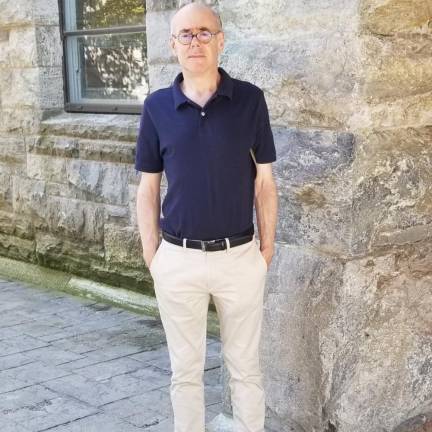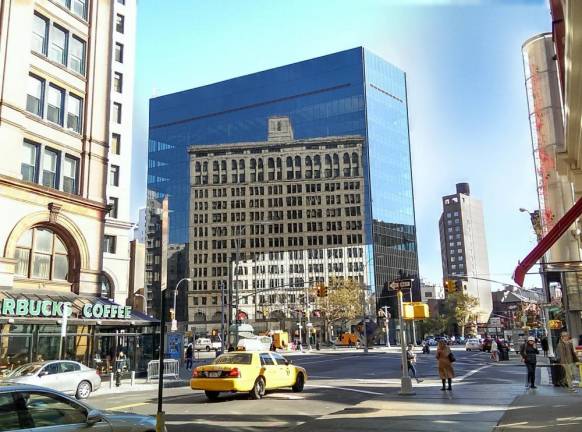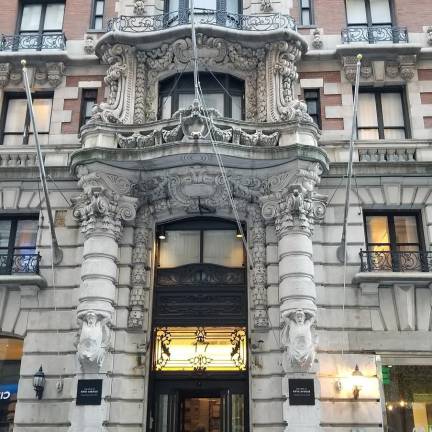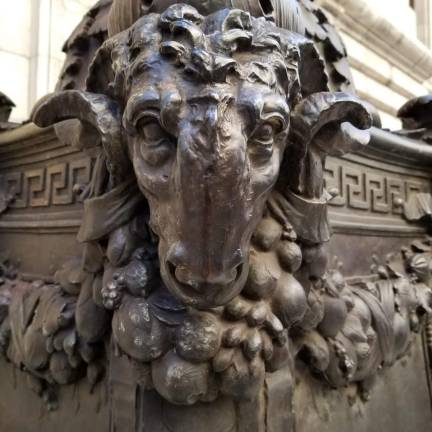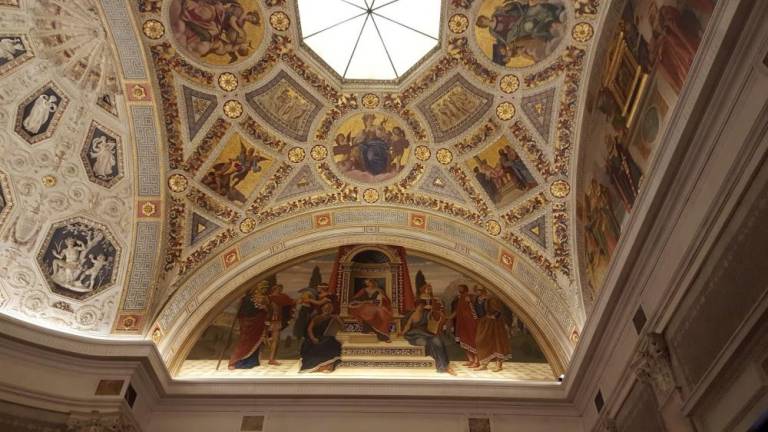Francis Morrone has written the book on New York architecture, literally. Having penned 13 titles such as “The Architectural Guidebook to New York City” and “Guide to New York City Urban Landscapes,” he shares his knowledge and passion by teaching classes, giving lectures and conducting walking tours.
Although the COVID-19 pandemic has halted in-person meetings, it hasn’t stopped the Chicago native-turned Park Slope resident from educating New Yorkers on landmarks such as the New York Public Library, which he names his favorite piece of architecture in Manhattan, the Van Cortlandt House in the Bronx, and the Morris-Jumel Mansion in Washington Heights. “It means a lot to people to have these programs available right now,” he said. “So I feel like I’m really doing something for them because lockdown’s been hard.”
Through videoconferencing on Zoom, he is currently teaching his first class at 92nd Street Y on the architectural history of New York from the Dutch to Hudson Yards, and a summer session called “New York on Film” through NYU’s School of Professional Studies, where he’s taught for 25 years. Named by Travel + Leisure as one of the 13 best tour guides in the world, he is also still hosting virtual tours through the Municipal Art Society of New York on places like Old Chinatown on July 12 and Spring Street on July 26, using “material like historic maps and interior photos, the sort of stuff you can’t use in a walking tour out on the street.”
You’re originally from Chicago. What interested you about studying New York architecture?
I always grew up with a dream of New York, that happens to a lot of Chicagoans. They either have a dream of moving to New York one day or just become these implacable haters of New York. And that’s because Chicago always used to be called “The Second City” for many years. It’s now the third largest city in the country, but it used to be the second, so you have this sort of inferiority complex when you’re number two and New York you see as a step up. So as I grew up, I was always really fascinated by New York. I was always really interested in Chicago architecture and history, so it was easy to transfer that to New York. I grew up in a place called Oak Park, which is a suburb of Chicago that is world famous for its architecture because Frank Lloyd Wright lived and worked there and there are more than 20 houses by him in the town.
What would you say is your favorite piece of architecture in Manhattan?
I would have to say that the New York Public Library is an obvious choice. I mean it would probably be on most people’s list. But in my case, I had the opportunity to study it very closely because I co-wrote a book about it and spent a whole summer of my life almost living there and really studying its details, because that’s what the book is about, the architectural details of the building. And it’s just a knockout in every way. For example, the entry hall to the library, Astor Hall, as it’s called, is an entirely stone room; it’s marble. The floor, walls and ceiling are marble and even the four magnificent candelabra that are in each of the corners of that hall, which are among the most beautiful objects in the country, are made out of marble.
Although you’re not a professional tour guide, you’re known for your walking tours, which you’ve been giving for over 30 years now.
I do walking tours as an adjunct to my other work. But I love to do them and think I’m pretty good at them. I try not to repeat tours. When people say, “What’s your favorite walking tour?” I always say, “The one I haven’t given yet.” I’m a very introverted person, but for some reason, you put me in front of a crowd, and I flip a switch. Here’s a very funny story. I was once with my wife and another couple eating at a restaurant in Chelsea and when we exited, there was a homeless man outside the door asking for money. I gave him a dollar and he looked at me and his eyes lit up and he said, “I know you; you’re the man who gives speeches in the park.” [Laughs]
Tell us about a Zoom tour you’ve conducted during quarantine.
I do tours for an organization called the Municipal Art Society of New York, and just did a two-part tour of the Lower East Side. What was really interesting about it was that I could use a lot of historical maps and trace very carefully the way that the neighborhood has physically changed over time. But also, on my tours I really like to go beyond architecture and talk about literature and various historical matters. These days, with so much interest in things like the history of race relations in New York and protest demonstrations and riots, any given neighborhood of New York just has a ton of that history which really helps provide perspective and context.
What are some examples of buildings you’re covering in your 92nd Street Y class?
I’m talking about buildings from each of the architectural periods in the history of New York City. Truth to tell, when it comes to colonial architecture and early American architecture, New York is not number one. I also teach courses on American architecture, and when you’re in that period, you’re really talking about Virginia, Massachusetts, and New York doesn’t even register yet, but there are still houses that are notable relics from that period like the Van Cortlandt house in the Bronx, which was built by enslaved Africans. The Morris-Jumel Mansion in Upper Manhattan is a very important house; I love to talk about that. I love to talk about St. Paul’s Chapel downtown, which is one of the city’s and country’s greatest treasures. And then move on from there and talk about the development of row houses in New York, and churches, which are a great love of mine.
